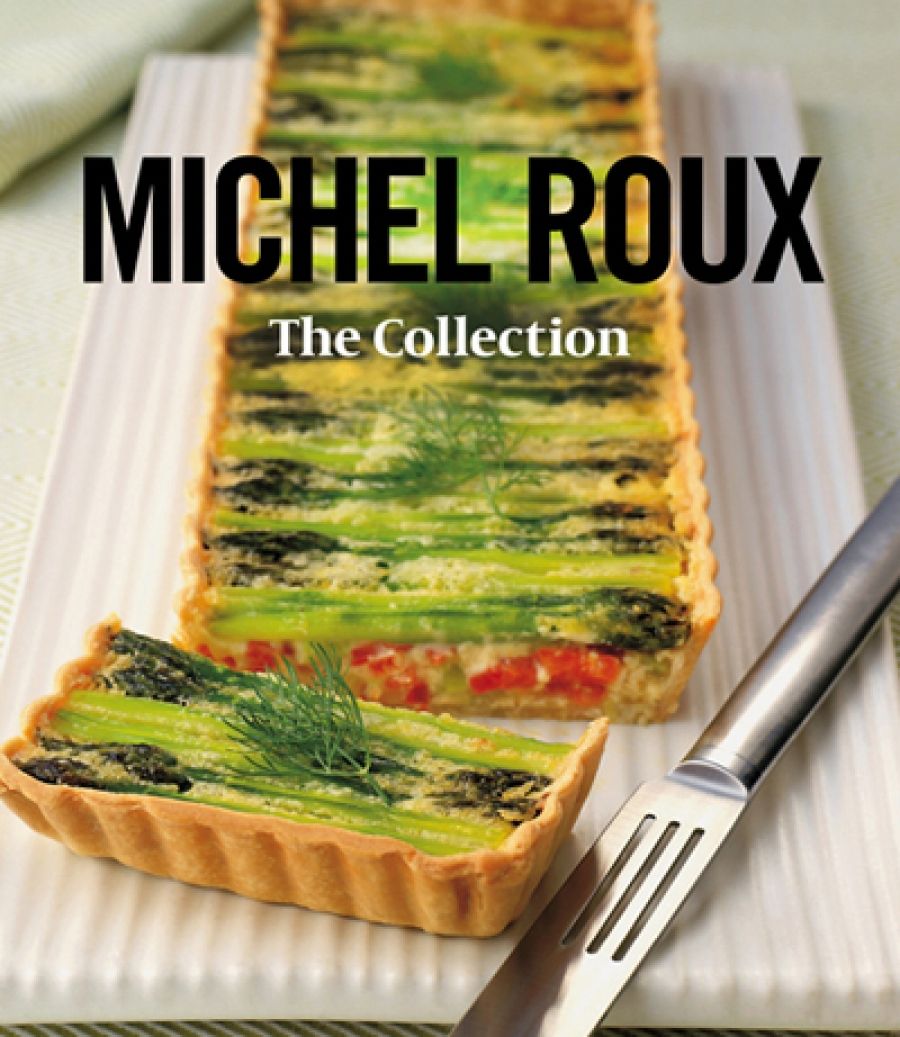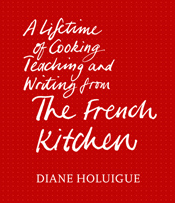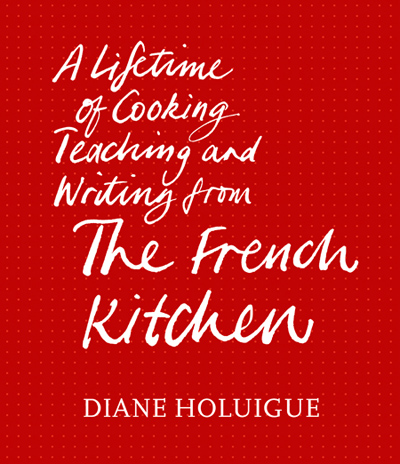
- Free Article: No
- Contents Category: Food
- Review Article: Yes
- Article Title: Postcards and poached eggs
- Online Only: No
- Custom Highlight Text:
Here are two welcome additions to a long list of cookery publications in Australia promoting Gallic cuisine. French or French-style cookery in this country has come a long way since Ted Moloney and Deke Coleman’s charming but slight Oh, for a French Wife! was published by Ure Smith in 1952. Both Michel Roux: The Collection and Diane Holuigue’s A Lifetime of Cooking, Teaching and Writing from the French Kitchen demand a level of culinary skill, dedication, time, equipment, and household budget unimaginable for most Australian home cooks sixty years ago. Michel Roux is a Michelin-starred French chef and long-time resident in the United Kingdom. Diane Holuigue is a well-known, Melbourne-based Australian cookery teacher and writer. Through their cooking and publications, both have been hugely influential: Roux internationally, Holuigue in Australia.
- Book 1 Title: Michel Roux: The Collection
- Book 1 Biblio: Lantern, $59.99 hb, 319 pp, 9781921383465
- Book 2 Title: A Lifetime of Cooking, Teaching and Writing from the French Kitchen
- Book 2 Biblio: Slattery Media Group, $89.95 hb, 751 pp, 9781921778681
- Book 2 Cover Small (400 x 600):

- Book 2 Cover (800 x 1200):

- Book 2 Cover Path (no longer required): images/stories/issues/349_March_2013/A-Lifetime-of-Cooking-Teaching-and-Writing-from-The-French-Kitchen.jpg
Whether they are imported publications like Roux’s, or home-grown ones like Holuigue’s, books on French cookery, at a range of technical levels, have influenced generations of Australian cooks and dining. Whatever the fashion in Australia for other European cuisines and for Asian and Central American food, French or French-influenced cookery books have remained a mainstay of cookery literature in Australia.
Whether it is the nature of the cuisine itself and how it has evolved or its incredibly regulated and structured teaching, French cookery, more than most other cuisines, places an overt emphasis on technique and the mastery of such in order to create dishes to the accepted level of presentation. Both Roux and Holuigue intersperse their recipes with basic but extremely useful recipes covering stocks, sauces, pastries, and ways to prepare eggs. (Roux’s description and accompanying photographs of the perfect poached egg could not be simpler.) Although such recipes can be found elsewhere, even experienced cooks can benefit from refresher courses in techniques, and it does save time looking up other books. Indeed, Holuigue arranges recipes in her large and comprehensive volume around techniques, well-illustrated by sketches, an admirable and thoughtful way to encourage experimentation and invention in the home cook.
Both volumes are distillations of long and fruitful careers, lifetimes in kitchens and restaurants. Roux, in his introduction, states that the 250 recipes are his favourites. Holuigue presents previously published recipes from her out-of-print books along with short essays (‘Postcards from Kitchens Abroad’) on other aspects of food and gastronomy. These show her considerable descriptive and journalistic skills, and are worth reading on their own, away from the kitchen. They range widely, from Italy to India, Cambodia to New Caledonia.
 Diane HoluigueThe design and layout of both books are clear and attractive, the photographs and illustrations informative and useful. It is refreshing that Holuigue and Roux do not simplify or patronise. They assume their readers will rise to the highest of Gallic standards. To cook from Roux’s book you will need to use your judgement in adapting some of the recipes for Australia. For instance, our seafood differs greatly from that of Britain, so substitutes must be found if the dishes are to be attempted (Holuigue gives local suggestions). Only the adventurous in this country will attempt the superb-sounding and dazzling-looking Wild Mushroom Terrine – five different types of mushrooms, cooked and set in a clarified chicken stock. Only the foolhardy, or the extremely knowledgeable, would try to find Australian substitutes for ceps, chanterelles, girolles, or trompettes de la mort on a local mushroom hunt.
Diane HoluigueThe design and layout of both books are clear and attractive, the photographs and illustrations informative and useful. It is refreshing that Holuigue and Roux do not simplify or patronise. They assume their readers will rise to the highest of Gallic standards. To cook from Roux’s book you will need to use your judgement in adapting some of the recipes for Australia. For instance, our seafood differs greatly from that of Britain, so substitutes must be found if the dishes are to be attempted (Holuigue gives local suggestions). Only the adventurous in this country will attempt the superb-sounding and dazzling-looking Wild Mushroom Terrine – five different types of mushrooms, cooked and set in a clarified chicken stock. Only the foolhardy, or the extremely knowledgeable, would try to find Australian substitutes for ceps, chanterelles, girolles, or trompettes de la mort on a local mushroom hunt.
The dishes I have prepared (Fricassée of Chicken with Baby Vegetables, and Lemon and Strawberry Tarts) while not especially original or innovative, showed all the elegance and sophistication expected from such a renowned chef. Roux’s extra details in execution give them added suavity: glaze the  Swordfish with confit of tomato and pink grapefruit (from A Lifetime of Cooking)pastry base with an egg wash near the end of baking; cook all the vegetables separately, assembling them together with the chicken and sauce at the end. These dishes are in the mid-range of complexity: there is something reassuring to be led in the one volume from how to boil an egg to the more complex dishes of fish baked in pastry, such as Salmon Coulibiac.
Swordfish with confit of tomato and pink grapefruit (from A Lifetime of Cooking)pastry base with an egg wash near the end of baking; cook all the vegetables separately, assembling them together with the chicken and sauce at the end. These dishes are in the mid-range of complexity: there is something reassuring to be led in the one volume from how to boil an egg to the more complex dishes of fish baked in pastry, such as Salmon Coulibiac.
Holuigue, showing her willingness to experiment, offers helpful adaptations of French originals for Australian conditions. She shares her observations and the ways she has changed and adapted recipes over the decades. A true teacher, she devotes a page to whether or not to baste a roast. Holuigue explains clearly why she is in the non-basting camp. This is surely what we want from a cookery book: general explanations on cookery that are soundly based on experience, and basic recipes that we are encouraged to modify and thereby make our own.


Comments powered by CComment